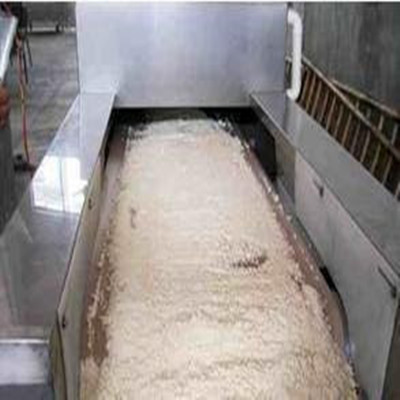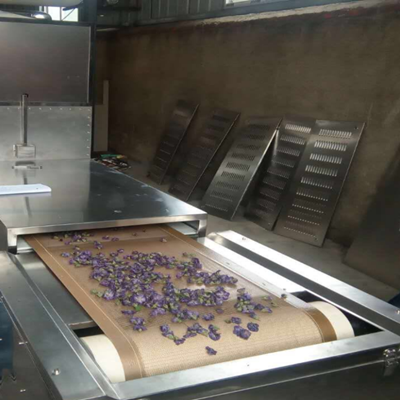The manufacturing process of the chip can be roughly divided into several steps such as a wafer processing process (Wafer Fabrication), a wafer needle testing process (Wafer Probe), a packaging process (Initial Test and Final Test), and the like. The wafer processing step and the wafer needle measurement step are the front end steps, and the assembly process and the test process are the back end processes.

1. Wafer processing process: The main work of this process is to make circuits and electronic components (such as transistors, capacitors, logic switches, etc.) on the wafer. The processing procedure is usually related to the product type and the technology used, but generally The steps are to properly clean the wafer, perform oxidation and chemical vapor deposition on the surface, and then perform repeated steps such as coating, exposure, development, etching, ion implantation, metal sputtering, etc., and finally complete several layers on the wafer. Circuit and component processing and fabrication.
2, wafer needle testing process: After the previous process, the wafer is formed into a small grid, that is, the grain, in general, in order to facilitate testing, improve efficiency, the same variety is produced on the same wafer, Specifications of the product; but can also be produced according to the needs of several different varieties and specifications. After measuring the electrical characteristics of each die with a probe, and marking the unqualified die, the wafer is cut into individual grains and then electrically characterized. Classification, loading into different trays, and rejecting unqualified grains.
3. The assembly process is to fix a single die on a plastic or ceramic chip base, and connect some lead terminals etched on the die to the pins protruding from the bottom of the base to serve as the external For the connection of the circuit board, finally cover the plastic cover and seal it with glue. Its purpose is to protect the crystal grains from mechanical scratches or high temperature damage. At this point, we have made an integrated circuit chip (that is, those black or brown that we can see in the computer, rectangular blocks with many pins or leads on both sides or four sides).
4. Test procedure: The last process of chip manufacturing is testing. It can be divided into general test and special test. The former is to test the electrical characteristics of the packaged chip under various environments, such as power consumption, running speed, Pressure resistance, etc. The tested chips are classified into different grades according to their electrical characteristics. The special test is based on the technical parameters of the customer's special needs, take some chips from the similar parameter specifications and varieties, and do specific tests to see if they can meet the special needs of customers to decide whether they need to design special for customers. chip. Products that have passed the general test are affixed with labels of specifications, models, and date of manufacture, and are packaged and shipped. Chips that fail the test are classified as downgrades or scraps depending on the parameters they reach.
The basic raw material for manufacturing chips
The basic raw materials for manufacturing chips: silicon, metal materials (aluminum main metal materials, electromigration characteristics are better. Copper interconnect technology can reduce the chip area, and because the resistance of the copper conductor is lower, the current passing through it is also faster) , chemical raw materials, etc.
Chip preparation stage
After the collection of the necessary raw materials, some of these raw materials require some pre-treatment work. As the most important raw material, the processing of silicon is crucial. First, the silicon raw material is subjected to chemical purification, which is a step to achieve the level of raw materials available to the semiconductor industry. In order for these silicon raw materials to meet the processing needs of integrated circuit manufacturing, they must also be shaped by melting the silicon raw material and then injecting the liquid silicon into a large high-temperature quartz container.
Then, the raw material is melted at a high temperature in order to meet the requirements of a high-performance processor, and the whole silicon raw material must be highly pure, and single crystal silicon. The silicon raw material is then taken out from the high temperature vessel by means of rotational stretching, at which time a cylindrical ingot is produced. From the current process, the diameter of the circular cross section of the ingot is 200 mm. It is quite difficult to increase the cross-sectional area while retaining the various characteristics of the ingot, but as long as the company is willing to invest a large amount of money for research, it can be achieved. Intel's plant for the development and production of 300mm silicon ingots cost about $3.5 billion. The success of the new technology has enabled intel to manufacture more complex and powerful integrated circuit chips. The 200mm silicon ingot factory also cost 15 One hundred million U.S. dollars. The following describes the manufacturing process of the chip from the slicing of the silicon ingot.

After making the ingot and ensuring it is an absolute cylinder, the next step is to slice the cylindrical ingot. The thinner the slice, the more material you use, the more processor chips you can produce. The slicing is also mirror finished to ensure that the surface is absolutely smooth and then checked for distortion or other problems. This step of quality inspection is particularly important, it directly determines the quality of the finished chip.
Some new materials are incorporated into the new slice to make it a true semiconductor material, and then a transistor circuit representing various logic functions is patterned on it. The doped substance atoms enter the gap between the silicon atoms, and an atomic force acts between them, so that the silicon raw material has semiconductor characteristics. Today's semiconductor manufacturing is dominated by CMOS processes (complementary metal oxide semiconductors). The term complementary refers to the interaction between the N-type MOS transistor and the P-type MOS transistor in the semiconductor. N and P represent the negative electrode and the positive electrode, respectively, in the electronic process. In most cases, the slice is doped with a chemical to form a P-type substrate, and the logic circuit on which it is scribed is designed to follow the characteristics of the nMOS circuit. This type of transistor has higher space utilization and is more energy efficient. At the same time, in most cases, the presence of pMOS transistors must be limited as much as possible, because in the later stages of the manufacturing process, N-type materials need to be implanted into the P-type substrate, which leads to the formation of pMOS transistors.
After the work of incorporating the chemical is completed, the standard section is completed. Then, each slice was placed in a high temperature furnace and heated to control the heating time to form a silicon dioxide film on the surface of the slice. The thickness of the silica layer is controllable by closely monitoring the temperature, air composition and warming time. In Intel's 90-nanometer manufacturing process, the gate oxide width is as small as an astonishing 5 atomic thickness. This layer of gate is also part of the transistor gate. The function of the transistor gate is to control the flow of electrons between them. By controlling the gate voltage, the flow of electrons is strictly controlled regardless of the voltage of the input and output ports. The final step in the preparation is to cover the silicon dioxide layer with a photosensitive layer. This layer of material is used for other control applications in the same layer. This material has a good sensitizing effect when dried, and can be chemically dissolved and removed after the photolithography process is completed.
Photoetching
Photolithography is a very complicated process in the chip manufacturing process. Why do you say that? The photolithography process uses a certain wavelength of light to inscribe a corresponding score in the photosensitive layer, thereby changing the chemical properties of the material at that location. This technology requires extremely stringent wavelengths of light used, requiring the use of short-wavelength ultraviolet light and large curvature lenses. The etching process is also affected by stains on the wafer. Every step of etching is a complicated process. The amount of data required to design each step of the process can be measured in units of 10 GB, and the number of etching steps required to fabricate each processor exceeds 20 steps (one layer of etching per step). And if each layer of etched drawings is magnified many times, it can be even more complicated than the entire New York City plus suburban maps. Imagine reducing the entire New York map to a real area of ​​only 100 square millimeters. On the chip, then how complex the structure of this chip can be imagined.
When these etching operations are all completed, the wafer is flipped over. Short-wavelength light is transmitted through the hollow nicks on the quartz stencil onto the photosensitive layer of the wafer, and the light and stencil are removed. The photosensitive layer material exposed to the outside is chemically removed, and the silica is immediately formed below the hollowed out position.
Doping

After the residual photosensitive layer material is removed, the remaining is the filled silicon dioxide layer of the trench and the exposed silicon layer below the layer. After this step, another silicon dioxide layer is completed. Then, another polysilicon layer with a photosensitive layer is added. Polysilicon is another type of gate. Since a metal stock (hence the name metal oxide semiconductor) is used here, polysilicon allows the gate to be established before the transistor queue port voltage is active. The photosensitive layer is also etched through the mask by short-wavelength light. After an etch, all the required gates are basically formed. Then, the exposed silicon layer is chemically bombarded by ion, and the purpose here is to generate an N-channel or a P-channel. This doping process creates all the transistors and circuit connections to each other. No transistor has an input and an output, and the two ends are called ports.


PTFE Conveyor Belt is a kind of belt which is non-toxic, non-odor, non-stick surface and suitable for conveying food and food materials.The belt can be used in various power transmission applications, such as drying application, screen print dryers, shrink tunnels.
The belt are known for their long serving life and sturdy construction.
Properties:
·Exceptional strength and dimensional stability
·Operating temperature range from -70℃ to +260℃
·Excellent release properties.
·Low coefficient of friction.
·Easily cleaned.
·Good chemical, moisture and corrosion resistance.
·Good electrical insulation and di-electric properties.
·Food contact approval.



|
Standard Roll Size (mtrs):
|
3800mm*250m
|
|
mesh size (mm)
|
1*1, 2*2, 2*2.5, 4*4, 10*10
|
(Other thickness available upon request)
Conveyor Belt
Conveyor Belt,Teflon Conveyor Belts,Fiberglass Open Mesh Conveyor Belt,Teflon Mesh Conveyor Belt
TAIZHOU YAXING PLASTIC INDUSTRY CO., LTD , https://www.yaxingptfe.com







